Blood pressure control for diabetic retinopathy
- PMID: 36975019
- PMCID: PMC10049880
- DOI: 10.1002/14651858.CD006127.pub3
Blood pressure control for diabetic retinopathy
Abstract
Background: Diabetic retinopathy is a common complication of diabetes and a leading cause of visual impairment and blindness. Research has established the importance of blood glucose control to prevent development and progression of the ocular complications of diabetes. Concurrent blood pressure control has been advocated for this purpose, but individual studies have reported varying conclusions regarding the effects of this intervention.
Objectives: To summarize the existing evidence regarding the effect of interventions to control blood pressure levels among diabetics on incidence and progression of diabetic retinopathy, preservation of visual acuity, adverse events, quality of life, and costs.
Search methods: We searched several electronic databases, including CENTRAL, and trial registries. We last searched the electronic databases on 3 September 2021. We also reviewed the reference lists of review articles and trial reports selected for inclusion.
Selection criteria: We included randomized controlled trials (RCTs) in which either type 1 or type 2 diabetic participants, with or without hypertension, were assigned randomly to more intense versus less intense blood pressure control; to blood pressure control versus usual care or no intervention on blood pressure (placebo); or to one class of antihypertensive medication versus another or placebo.
Data collection and analysis: Pairs of review authors independently reviewed the titles and abstracts of records identified by the electronic and manual searches and the full-text reports of any records identified as potentially relevant. The included trials were independently assessed for risk of bias with respect to outcomes reported in this review.
Main results: We included 29 RCTs conducted in North America, Europe, Australia, Asia, Africa, and the Middle East that had enrolled a total of 4620 type 1 and 22,565 type 2 diabetic participants (sample sizes from 16 to 4477 participants). In all 7 RCTs for normotensive type 1 diabetic participants, 8 of 12 RCTs with normotensive type 2 diabetic participants, and 5 of 10 RCTs with hypertensive type 2 diabetic participants, one group was assigned to one or more antihypertensive agents and the control group to placebo. In the remaining 4 RCTs for normotensive participants with type 2 diabetes and 5 RCTs for hypertensive type 2 diabetic participants, methods of intense blood pressure control were compared to usual care. Eight trials were sponsored entirely and 10 trials partially by pharmaceutical companies; nine studies received support from other sources; and two studies did not report funding source. Study designs, populations, interventions, lengths of follow-up (range less than one year to nine years), and blood pressure targets varied among the included trials. For primary review outcomes after five years of treatment and follow-up, one of the seven trials for type 1 diabetics reported incidence of retinopathy and one trial reported progression of retinopathy; one trial reported a combined outcome of incidence and progression (as defined by study authors). Among normotensive type 2 diabetics, four of 12 trials reported incidence of diabetic retinopathy and two trials reported progression of retinopathy; two trials reported combined incidence and progression. Among hypertensive type 2 diabetics, six of the 10 trials reported incidence of diabetic retinopathy and two trials reported progression of retinopathy; five of the 10 trials reported combined incidence and progression. The evidence supports an overall benefit of more intensive blood pressure intervention for five-year incidence of diabetic retinopathy (11 studies; 4940 participants; risk ratio (RR) 0.82, 95% confidence interval (CI) 0.73 to 0.92; I2 = 15%; moderate certainty evidence) and the combined outcome of incidence and progression (8 studies; 6212 participants; RR 0.78, 95% CI 0.68 to 0.89; I2 = 42%; low certainty evidence). The available evidence did not support a benefit regarding five-year progression of diabetic retinopathy (5 studies; 5144 participants; RR 0.94, 95% CI 0.78 to 1.12; I2 = 57%; moderate certainty evidence), incidence of proliferative diabetic retinopathy, clinically significant macular edema, or vitreous hemorrhage (9 studies; 8237 participants; RR 0.92, 95% CI 0.82 to 1.04; I2 = 31%; low certainty evidence), or loss of 3 or more lines on a visual acuity chart with a logMAR scale (2 studies; 2326 participants; RR 1.15, 95% CI 0.63 to 2.08; I2 = 90%; very low certainty evidence). Hypertensive type 2 diabetic participants realized more benefit from intense blood pressure control for three of the four outcomes concerning incidence and progression of diabetic retinopathy. The adverse event reported most often (13 of 29 trials) was death, yielding an estimated RR 0.87 (95% CI 0.76 to 1.00; 13 studies; 13,979 participants; I2 = 0%; moderate certainty evidence). Hypotension was reported in two trials, with an RR of 2.04 (95% CI 1.63 to 2.55; 2 studies; 3323 participants; I2 = 37%; low certainty evidence), indicating an excess of hypotensive events among participants assigned to more intervention on blood pressure.
Authors' conclusions: Hypertension is a well-known risk factor for several chronic conditions for which lowering blood pressure has proven to be beneficial. The available evidence supports a modest beneficial effect of intervention to reduce blood pressure with respect to preventing diabetic retinopathy for up to five years, particularly for hypertensive type 2 diabetics. However, there was a paucity of evidence to support such intervention to slow progression of diabetic retinopathy or to affect other outcomes considered in this review among normotensive diabetics. This weakens any conclusion regarding an overall benefit of intervening on blood pressure in diabetic patients without hypertension for the sole purpose of preventing diabetic retinopathy or avoiding the need for treatment for advanced stages of diabetic retinopathy.
Trial registration: ClinicalTrials.gov NCT00542178 NCT00237549 NCT00185159 NCT00320008 NCT003200087-2452 NCT00134160.
Copyright © 2023 The Cochrane Collaboration. Published by John Wiley & Sons, Ltd.
Conflict of interest statement
Diana V Do: no conflicts to declare
Genie Han: no conflicts to declare
Samuel A Abariga: no conflicts to declare
Gina Sleilati: no conflicts to declare
S Swaroop Vedula: no conflicts to declare
Barbara S Hawkins: no conflicts to declare
Figures

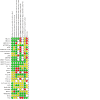
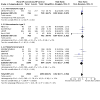
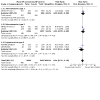

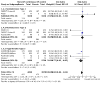

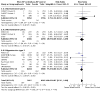



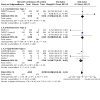
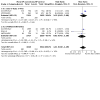
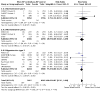

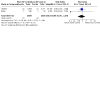
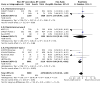
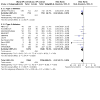
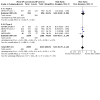
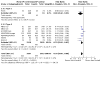
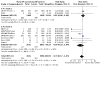
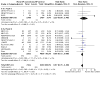

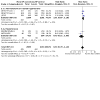



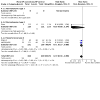
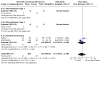


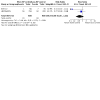
Update of
-
Blood pressure control for diabetic retinopathy.Cochrane Database Syst Rev. 2015 Jan 31;1:CD006127. doi: 10.1002/14651858.CD006127.pub2. Cochrane Database Syst Rev. 2015. Update in: Cochrane Database Syst Rev. 2023 Mar 28;3:CD006127. doi: 10.1002/14651858.CD006127.pub3. PMID: 25637717 Free PMC article. Updated.
Comment in
-
Blood Pressure Control for Patients With Diabetic Retinopathy.Am Fam Physician. 2024 Aug;110(2):131-132. Am Fam Physician. 2024. PMID: 39172669 No abstract available.
References
References to studies included in this review
ABCD (1) {published data only}
-
- Schrier RW, Estacio RO, Esler A, Mehler P. Effects of aggressive blood pressure control in normotensive type 2 diabetic patients on albuminuria, retinopathy and strokes. Kidney International 2002;61(3):1086-97. - PubMed
-
- Schrier RW, Estacio RO, Jeffers B. Appropriate Blood Pressure Control in NIDDM (ABCD) Trial. Diabetologia 1996;39(12):1646-54. - PubMed
-
- Schrier RW, Estacio RO, Mehler PS, Hiatt WR. Appropriate blood pressure control in hypertensive and normotensive type 2 diabetes mellitus: a summary of the ABCD trial. Nature Clinical Practice Nephrology 2007;3(8):428-38. - PubMed
-
- Schrier RW, Savage S. Appropriate Blood Pressure Control in Type II Diabetes (ABCD Trial): implications for complications. American Journal of Kidney Diseases 1992;20(6):653-7. - PubMed
ABCD (2) {published data only}
-
- Estacio RO, Jeffers BW, Gifford N, Schrier RW. Effect of blood pressure control on diabetic microvascular complications in patients with hypertension and type 2 diabetes. Diabetes Care 2000;23(Suppl 2):B54-64. - PubMed
-
- Estacio RO, Jeffers BW, Hiatt WR, Biggerstaff SL, Gifford N, Schrier RW. The effect of nisoldipine as compared with enalapril on cardiovascular outcomes in patients with non-insulin dependent diabetes and hypertension. New England Journal of Medicine 1998;338(10):645-52. - PubMed
-
- Savage S, Nagel NJ, Estacio RO, Feig PU, MacCarthy EP, Lukken NJ, et al. The ABCD (Appropriate Blood Pressure Control in Diabetes) Trial. Rationale and design of a trial of hypertension control (moderate or intensive) in type II diabetes. Online Journal of Current Clinical Trials 1993 Nov:Doc No 104. - PubMed
-
- Schrier RW, Estacio RO, Mehler PS, Hiatt WR. Appropriate blood pressure control in hypertensive and normotensive type 2 diabetes mellitus: a summary of the ABCD trial. Nature Clinical Practice Nephrology 2007;3(8):428-38. - PubMed
ABCD‐2V (1) {published data only}
-
- Estacio RO, Coll JR, Tran ZV, Schrier RW. Effect of intensive blood pressure control with valsartan on urinary albumin excretion in normotensive patients with type 2 diabetes. American Journal of Hypertension 2006;19:1241-8. - PubMed
ACCORD Eye {published data only}
-
- Action to Control Cardiovascular Risk in Diabetes Follow-On (ACCORDION) Eye Study Group and Action to Control Cardiovascular Risk in Diabetes Follow-On (ACCORDION) Study Group. Persistent effects of intensive glycemic control on retinopathy in type 2 diabetes in the Action to Control Cardiovascular Risk in Diabetes (ACCORD) Follow-On Study. Diabetes Care 2016;39:10889-1100. [DOI: 10.2337/dc16-0024] - DOI - PMC - PubMed
-
- Buse JB, Bigger JT, Byington RP, Cooper LS, Cushman WC, Friedewald WT, et al. Action to Control Cardiovascular Risk in Diabetes (ACCORD) Trial: design and methods. American Journal of Cardiology 2007;99(12A):21-33i. - PubMed
-
- Chew EY, Ambrosius WT, Howard LT, Greven CM, Johnson S, Danis RP, et al. Rationale, design, and methods of the Action to Control Cardiovascular Risk in Diabetes Eye Study (ACCORD-EYE). American Journal of Cardiology 2007;99(12A):103-11i. - PubMed
AdDIT {published data only}
-
- Dunger DB. Banting Memorial Lecture 2016 Reducing lifetime risk of complications in adolescents with Type 1 diabetes. Diabetic Medicine 2017;34(4):460-6. - PubMed
-
- Inman M, Daneman D, Curtis J, Sochett E, Clarke A, Dunger D, et al. Social determinants of health are associated with modifiable risk factors for cardiovascular disease and vascular function in pediatric type 1 diabetes. Journal of Pediatrics 2016;177:167-72. - PubMed
-
- Inman M, Daneman D, Curtis J, Sochett E, Elia Y, Dunger D, et al. Assessing social determinants of health in a pediatric diabetes clinical research trial: are recruited subjects representative of the larger clinical population. Diabetes Research and Clinical Medicine 2016;113:41-3. - PubMed
ADDITION‐Europe {published data only}
-
- Griffin SJ, Borch-Johnson K, Davies MJ, Khunti K, Rutten GEHM, Sandbaek A, et al. Effect of early intensive multifactorial therapy on 5-year cardiovascular outcomes in individuals with type 2 diabetes detected by screening (ADDITION-Europe): a cluster-randomised trial. Lancet 2011;9(378):156-67. [DOI: 10.1016./S0140-6736(11)606-98-3] - DOI - PMC - PubMed
-
- Griffin SJ, Rutten GEHM, Khunti K, Witte DR, Lauritzen T, Sharp SJ, et al. Long-term effects of intensive multifactorial therapy in individuals with screen-detected type 2 diabetes in primary care: 10-year follow-up of the ADDITION-Europe cluster randomised trial. Lancet Diabetes and Endocrinology 2019;7:925-37. - PubMed
-
- Lauritzen T, Griffin S, Borch-Johnsen K, Wareham NJ, Wolffenbuttel BHR, Tutten G for the ADDITION Study Group. The ADDITION Study: proposed trial of the cost-effectiveness of an intensive multifactorial intervention on morbidity and mortality among people with Type 2 diabetes detected by screening. International Journal of Obesity 2000;Suppl 3:S6-11. - PubMed
-
- Sandbaek A, Griffin SJ, Sharp SJ, Simmons RK, Borch-Johnsen K, Rutten GE, et al. Effect of early multifactorial therapy compared with routine care on microvascular outcomes at 5 years in people with screen-detected diabetes: a randomized controlled trial: The ADDITION-Europe Study. Diabetes Care 2014;37(7):2015-23. - PubMed
-
- Simmons RK, Borch-Johnson K, Lauritzen T, Rutten GEHM, Sandbaek A, den Donk M, et al. A randomised trial of the effect and cost-effectiveness of early intensive multifactorial therapy on 5-year cardiovascular outcomes in individuals with screen-detected type 2 diabetes: the Anglo-Danish-Dutch Study of Intensive Treatment in People with Screen-Detected Diabetes in Primary Care (ADDITION-Europe) study. Health Technology Assessment 2016;20(64):1-?. [ISSN: 1366-5278] - PMC - PubMed
ADVANCE/AdRem {published data only}
-
- ADVANCE Collaborative Group. ADVANCE - Action in Diabetes and Vascular Disease: patient recruitment and characteristics of the study population at baseline. Diabetic Medicine 2005;22(7):882-8. - PubMed
-
- ADVANCE Collaborative Group. Effects of a fixed combination of perindopril and indapamide on macrovascular and microvascular outcomes in patients with type 2 diabetes mellitus (the ADVANCE trial): a randomised controlled trial. Lancet 2007;370(9590):829-40. - PubMed
-
- ADVANCE Collaborative Group. Intensive blood glucose control and vascular outcomes in patients with type 2 diabetes. New England Journal of Medicine 2008;358(24):2560-72. - PubMed
-
- ADVANCE Management Committee. Study rationale and design of ADVANCE: Action in Diabetes and Vascular Disease - preterax and diamicron MR controlled evaluation. Diabetologia 2001;44(9):1118-20. - PubMed
-
- Beulens JWJ, Patel A, Vingerling JR, Cruickshank JK, Hughes AD, Stanton A, et al. Effects of blood pressure lowering and intensive glucose control on the incidence and progression of retinopathy in patients with type 2 diabetes mellitus: a randomized controlled trial. Diabetologia 2009;52(10):2027-46. - PubMed
BENEDICT {published data only}
-
- BENEDICT Group. The BErgamo NEphrologic DIabetes Complications Trial (BENEDICT). Controlled Clinical Trials 2003;24(4):442-61. - PubMed
-
- Ruggenenti P, Fassi A, Parvanova I, Bruno S, Iliev IP, Brusegan V, et al. Preventing microalbuminuria in type 2 diabetes. New England Journal of Medicine 2004;351(19):1941-51. - PubMed
-
- Ruggenenti P, Iliev I, Filipponi M, Tadini S, Perna A, Ganeva M. Effect of trandolapril on regression of retinopathy in hypertensive patients with type 2 diabetes: a prespecified analysis of the Benedict trial. Journal of Ophthalmology 2010;2010:Article ID 106384. [DOI: 10.1155/2010/106384] - DOI - PMC - PubMed
Chase {published data only}
-
- Chase HP, Garg SK, Harris S, Hoops S, Jackson WE, Holmes DL. Angiotensin-converting enzyme inhibitor treatment for young normotensive diabetic subjects: a two-year trial. Annals of Ophthalmology 1993;25(8):284-9. - PubMed
DEMAND {published data only}
-
- Ruggenenti P, Lauria G, Iliev IP, Fassi A, Ilieva AP, Rota S. Effects of manidipine and delapril in hypertensive patients with type 2 diabetes mellitus: the Delapril and Manidipine for Nephroprotection in Diabetes (DEMAND) randomized clinical trial. Hypertension 2011;58(5):776-83. - PubMed
DIRECT Prevent 1 {published data only}
-
- Chaturvedi N, DIRECT Programme Study Group. The DIabetic REtinopathy Candesartan Trials (DIRECT) Programme, rationale and study design. Journal of the Renin-Angiotensin-Aldosterone System 2002;3(4):255-61. - PubMed
-
- Chaturvedi N, Porta M, Klein R, Orchard T, Fuller J, Parving HH, et al. Effect of candesartan on prevention (DIRECT-Prevent 1) and progression (DIRECT-Protect 1) of retinopathy in type 1 diabetes: randomised, placebo-controlled trials. Lancet 2008;372(9647):1394-402. - PubMed
-
- DIRECT Programme Study Group. The DIabetic REtinopathy Candesartan Trials (DIRECT) Programme: baseline characteristics. Journal of the Renin-Angiotensin-Aldosterone System 2005;6(1):25-32. - PubMed
-
- Sjolie AK, Klien R, Portat M, Orchard T, Fuller J, Parving HH, et al. Retinal microaneurysm count predicts progression and regression of diabetic retinopathy. Post-hoc results from the DIRECT Programme. Diabetic Medicine 2011;28(3):345-51. - PubMed
DIRECT Protect 1 {published data only}
-
- Chaturvedi N, DIRECT Programme Study Group. DIabetic REtinopathy Candesartan Trials (DIRECT) Programme, rationale and study design. Journal of the Renin-Angiotensin-Aldosterone System 2002;3(4):255-61. - PubMed
-
- Chaturvedi N, Porta M, Klein R, Orchard T, Fuller J, Parving HH, et al. Effect of candesartan on prevention (DIRECT-Prevent 1) and progression (DIRECT-Protect 1) of retinopathy in type 1 diabetes: randomised, placebo-controlled trials. Lancet 2008;372(9647):1394-402. - PubMed
-
- DIRECT Programme Study Group. DIabetic REtinopathy Candesartan Trials (DIRECT) Programme: baseline characteristics. Journal of the Renin-Angiotensin-Aldosterone System 2005;6(1):25-32. - PubMed
DIRECT Protect 2 {published data only}
-
- Chaturvedi N, DIRECT Programme Study Group. DIabetic REtinopathy Candesartan Trials (DIRECT) Programme, rationale and study design. Journal of the Renin-Angiotensin-Aldosterone System 2002;3(4):255-61. - PubMed
-
- DIRECT Programme Study Group. DIabetic REtinopathy Candesartan Trials (DIRECT) Programme: baseline characteristics. Journal of Renin-Angiotensin-Aldosterone System 2005;6(1):25-32. - PubMed
-
- Sjolie AK, Klein R, Porta M, Orchard T, Fuller J, Parving HH, et al. Effect of candesartan on progression and regression of retinopathy in type 2 diabetes (DIRECT-Protect 2): a randomised placebo-controlled trial. Lancet 2008;372(9647):1385-93. - PubMed
EUCLID {published data only}
-
- Chaturvedi N, Fuller JH, Pokras F, Rottiers R, Papazoglou N, Aiello LP, et al. Circulating plasma vascular endothelial growth factor and microvascular complications of type 1 diabetes mellitus: the influence of ACE inhibition. Diabetes Medicine 2001;18(4):288-94. - PubMed
-
- Chaturvedi N, Sjolie AK, Stephenson JM, Abrahamian H, Keipes M, Castellarin A, et al. Effect of lisinopril on progression of retinopathy in normotensive people with type 1 diabetes. Lancet 1998;351(9095):28-31. - PubMed
-
- EUCLID Study Group. Randomised placebo-controlled trial of lisinopril in normotensive patients with insulin-dependent diabetes and normoalbuminuria or microalbuminuria. Lancet 1997;349(9068):1787-92. - PubMed
-
- Sjolie AK, Chaturvedi N, Fuller J, EUCLID Study Group. Effect of lisinopril on progression of retinopathy and microalbuminuria in normotensive subjects with insulin-dependent diabetes mellitus [Effekt af lisinopril på progression af retinopati og mikroalbuminuri hos normotensive personer med insulinafhaengig diabetes mellitus]. Ugeskrift for Laeger 1999;161(7):949-52. - PubMed
-
- Sjolie AK, Stephenson J, Aldington S, Kohner E, Janka H, Stevens L, et al. Retinopathy and vision loss in insulin-dependent diabetes in Europe. The EURODIAB IDDM Complications Study. Ophthalmology 1997;104(2):252-60. - PubMed
HINTS {published data only}
-
- Bosworth H, Powers B, Olsen M, McCant F, Grubber J, Smith V, et al. Home blood pressure management and improved blood pressure control: results from a randomized controlled trial. Archives of Internal Medicine 2011;171(13):1173-80. - PubMed
-
- Bosworth HB, Olsen M K, McCant F, Harrelson Ml, Gentry P, Rose C, et al. Hypertension Intervention Nurse Telemedicine Study (HINTS): testing a multifactorial tailored behavioral/educational and a medication management intervention for blood pressure control. American Heart Journal 2007;153(6):918-24. - PubMed
-
- Muir K, Grubber J, Mruthyunjaya P, McCant F, Bosworth H. Progression of diabetic retinopathy in the Hypertension Intervention Nurse Telemedicine Study. JAMA Ophthalmology 2013;131(7):957-8. - PubMed
J‐DOIT3 {published data only}
-
- Ueki, Sasako T, Kato M, Okazaki Y, Okahata S, Katsuyama H, et al. Design of and rationale for the Japan Diabetes Optimal Integrated Treatment study for 3 major risk factors of cardiovascular diseases (J-DOIT3): a multicenter, open-label, randomized, parallel-group trial. BMJ Open Diabetes Research and Care 2016;4(1):e000123. [DOI: 10.1136/bmjdrc-2015-000123] - DOI - PMC - PubMed
-
- Ueki K, Sasako T, Okazaki Y, Kato M, Okahata S, Katsuyama H, et al. Effect of an intensified multifactorial intervention on cardiovascular outcomes and mortality in type 2 diabetes (J-DOIT3): an open-label, randomised controlled trial. Lancet Diabetes Endocrinol 2017;5(12):951-64. [DOI: 10.1016/s2213-8587(17)30327-3] - DOI - PubMed
J‐EDIT {published data only}
-
- Araki A, Iimuro S, Sakurai T, Umegaki H, Iijima K, Nakano H, et al. Long‐term multiple risk factor interventions in Japanese elderly diabetic patients: The Japanese Elderly Diabetes Intervention Trial–study design, baseline characteristics and effects of intervention. Geriatrics & Gerontology International 2012;12:7-17. - PubMed
-
- Tanaka S, Yoshimura Y, Kawasaki R, Kamada C, Tanaka S, Horikawa C, et al. Fruit intake and incident diabetic retinopathy with type 2 diabetes. Epidemiology 2013;24(2):204-11. [PMID: ] - PubMed
-
- Yamamoto T, Iimuro S, Ohashi Y Sone H, Yamashita H, Ito H, Japanese Elderly Intervention Trial Research Group. Prevalence and risk factors for diabetic maculopathy, and its relationship to diabetic retinopathy in elderly Japanese patients with type 2 diabetes mellitus. Geriatrics and Gerontology International 2012;12:134-40. - PubMed
-
- Yamamoto T, Iimuro S Ohashi Y, Sone H, Ito H, Yamashita H, Japanese Elderly Diabetes Intervention Trial Study Group. Long‐term risk factors for diabetic retinopathy and diabetic maculopathy in elderly Japanese patients with type 2 diabetes mellitus. Geriatrics and Gerontology International 2012;12:141-4. - PubMed
Knudsen {published data only}
-
- Knudsen ST, Bek T, Poulsen PL, Hove MN, Rehling M, Mogensen CE. Effects of losartan on diabetic maculopathy in type 2 diabetic patients: a randomized, double-masked study. Journal of Internal Medicine 2003;254:147-58. - PubMed
Larsen {published data only}
-
- Larsen M, Hommel E, Parving HH, Lund-Andersen H. Protective effect of captopril on the blood-retina barrier in normotensive insulin-dependent diabetic patients with nephropathy and background retinopathy. Graefe's Archive of Clinical and Experimental Ophthalmology 1990;228(6):505-9. - PubMed
Medi‐Cal {published data only}
-
- California Medi-Cal Type 2 Diabetes Study Group. Closing the gap: effect of diabetes care management on glycemic control among low-income ethnic minority populations.. Diabetes Care 2004;27(1):95-103. - PubMed
-
- Pettitt DJ, Wollitzer AO, Jovanovic L, He G, Ipp E, California Medi-Cal Type 2 Diabetes Study Group. Decreasing the risk of diabetic retinopathy in a study of case management. Diabetes Care 2005;28(12):2819-22. - PubMed
Pradhan {published data only}
-
- Pradhan R, Fong D, March C, Jack R, Rezapour G, Norris K, et al. Angiotensin-converting enzyme inhibition for the treatment of moderate to severe diabetic retinopathy in normotensive type 2 diabetic patients. A pilot study. Journal of Diabetes and Its Complications 2002;16(6):377-81. - PubMed
Rachmani 2002 {published data only}
-
- Rachmani R, Levi Z, Slavachevski I, Avin M, Ravid M. Teaching patients to monitor their risk factors retards the progression of vascular complications in high-risk patients with type 2 diabetes mellitus—a randomized prospective study. Diabetic Medicine 2002;19(5):385-92. - PubMed
RASS {published data only}
-
- Klein R, Moss SE, Sinaiko AR, Zinman B, Gardiner R, Suissa S, et al. The relation of ambulatory blood pressure and pulse rate to retinopathy in type 1 diabetes mellitus. The Renin-Angiotensin System Study. Ophthalmology 2006;113(12):2231-6. - PubMed
-
- Klein R, Zinman B, Gardiner R, Suissa S, Donnelly SM, Sinaiko AR, et al. The relationship of diabetic retinopathy to preclinical diabetic glomerulopathy lesions in type 1 diabetic patients. The Renin-Angiotensin System Study. Diabetes 2005;54(2):527-33. - PubMed
-
- Mauer M, Zinman B, Gardiner R, Drummond KN, Suissa S, Donnelly SM, et al. ACE-I and ARBs in early diabetic retinopathy. Journal of the Renin-Angiotensin-Aldosterone System 2002;3(4):262-9. - PubMed
Ravid 1993 {published data only}
-
- Ravid M, Savin H, Jutrin I, Bental T, Katz B, Lishner M. Long-term stabilizing effect of angiotensin-converting enzyme inhibition on plasma creatinine and on proteinuria in normotensive type II diabetic patients. Annals of Internal Medicine 1993;118(8):577-81. - PubMed
ROADMAP {published data only}
-
- Haller H, Ito S, Izzo JL, Januszewica A, Katayama S, Menne J, et al for the ROADMAP Investigators. Olmesartan for the delay or prevention of microalbuminuria in type 2 diabetes. New England Journal of Medicine 2011;364(10):907-17 [with Supplementary Appendix]. [CTG: ] - PubMed
-
- Haller H, Viberti GC, Mimran A, Remuzzi G, Rabelink AJ, Ritz E, et al. Preventing microalbuminuria in patients with diabetes: rationale and design of the Randomised Olmesartan and Diabetes Microalbuminuria Prevention (ROADMAP) study. Journal of Hypertension 2006;24(2):403-8. - PubMed
-
- Menne J, Fitz E, Ruilope LM, Chatzikyrkou C, Viberti G, Haller H. The Randomized Olmesartan and Diabetes Microalbuminuria Prevention (ROADMAP) observational follow-up study: benefits of RAS blockade with olmesartan treatment are sustained after study discontinuation. Journal of the American Heart Association 2014;3:e000810. [DOI: 10.1161/JAHA.114.000810] [CLINICALTRIALS.GOV: NCT00185159] - DOI - PMC - PubMed
Steno‐2 {published data only}
-
- Gaede J, Oellgaard J, Ibsen R, Gaede P, Nortoft E, Parving H-H, et al. A cost analysis of intensified vs conventional multifactorial therapy in individuals with type 2 diabetes: a post hoc analysis of the Steno-2 study. Diabetologia 2019;62:147-55. [CTG: ] [DOI: 10.1007/s00125-017-4739-3] - DOI - PMC - PubMed
-
- Gaede P, Oellgaard J, Carstensen B, Rossing P, Lund-Andersen H, Parving H-H, et al. Years of life gained by multifactorial intervention in patients with type 2 diabetes mellitus and microalbuminuria: 21 years follow-up on the Steno-2 randomised trial. Diabetologia 2016;59:2298-307. [CTG: ] [DOI: 10.1007/s00125-016-4065-6] - DOI - PMC - PubMed
-
- Gaede P, Vedel P, Larsen N, Jensen GVH, Parving HH, Pedersen O. Multifactorial intervention and cardiovascular disease in patients with type 2 diabetes. New England Journal of Medicine 2003;348(5):383-93. - PubMed
-
- Gaede P, Vedel P, Parving HH, Pedersen O. Intensified multifactorial intervention in patients with type 2 diabetes mellitus and microalbuminuria: the Steno type 2 randomised study. Lancet 1999;353(9153):617-22. - PubMed
UKPDS/HDS {published data only}
-
- Clarke PM, Gray AM, Briggs A, Stevens RJ, Matthews DR, Holman RR, et al. Cost-utility analyses of intensive blood glucose and tight blood pressure control in type 2 diabetes (UKPDS 72). Diabetologia 2005;48(5):868-77. - PubMed
-
- Gray A, Clarke P, Raikou M, Adler A, Stevens R, Neil A, et al. An economic evaluation of atenolol vs. captopril in patients with type 2 diabetes (UKPDS 54). Diabetes Medicine 2001;18(6):438-44. - PubMed
-
- Holman RR, Paul SK, Bethel MA, Andrew H, Neil W, Matthews DR. Long-term follow-up after tight control of blood pressure in type 2 diabetes. New England Journal of Medicine 2008;359(15):1565-76. - PubMed
-
- Hypertension in Diabetes Study Group. Hypertension in Diabetes Study III. Prospective study of therapy of hypertension in type 2 diabetic patients: efficacy of ACE inhibition and β-blockade. Diabetic Medicine 1994;11(8):773-82. - PubMed
Wang {published data only}
-
- Wang N, Zheng Z, Jin HY, Xu X. Treatment effects of captopril on non-proliferative diabetic retinopathy. Chinese Medical Journal 2012;125(2):287-92. - PubMed
Zhao {published data only}
-
- Zhao C-M, Cui X-L, Wan G, Lu Y-Z, Niu Y-Q, Su C-Y, et al. Analysis of the effect of nine consecutive years’ intensive management and number of times achieving the target control on endpoint events in T2DM patients in Sanlitun Community Health Service Center in Beijing. International Journal of Endocrinology 2020;2020:Article ID 3646342. [DOI: 10.1155/2020/3646342] - DOI - PMC - PubMed
References to studies excluded from this review
Aro 2019_new {published data only}
Auyanet 2010 {published data only}
-
- Auyanet I, Rodriguez LJ, Esparza N, Cabrera F, Rossique P, Suria S, et al. Does carvedilol minimize the requirements for laser photocoagulation in diabetic retinopathy? [Minimiza el carvedilol los requerimientos de fotocoagulacion laser en la retinopatia diabetica?]. Nefrologia 2010;30(4):473-4. - PubMed
CALM‐II {published data only}
-
- Andersen NH, Knudsen ST, Poulsen PL, Poulsen SH, Helleberg K, Eiskjaer H, et al. Dual blockade with candesartan cilexetil and lisinopril in hypertensive patients with diabetes mellitus: rationale and design. Journal of the Renin-Angiotensin-Aldosterone System 2003;4(2):96-9. - PubMed
-
- Andersen NH, Poulsen PL, Knudsen ST, Poulsen SH, Eiskjaer H, Hansen KW, et al. Long-term dual blockade with candesartan and lisinopril in hypertensive patients with diabetes: the CALM II study. Diabetes Care 2005;28(2):273-7. - PubMed
Chang 2011 {published data only}
DCCT {published data only}
-
- The Diabetes Control and Complications Trial/Epidemiology of Diabetes Interventions and Complications Research Group. Epidemiology of Diabetes Interventions and Complications (EDIC). Design, implementation, and preliminary results of a long-term follow-up of the Diabetes Control and Complications Trial cohort. Diabetes Care 1999;22(1):99-111. - PMC - PubMed
-
- The Diabetes Control and Complications Trial Research Group. Effect of intensive diabetes management on macrovascular events and risk factors in the Diabetes Control and Complications Trial. American Journal of Cardiology 1995;75(14):894-903. - PubMed
Durruty 2000 {published data only}
-
- Durruty P, Carpentier C, Krause P, Garcia de los Rios M. Evaluation of retinal involvement in type 2 diabetics with microalbuminuria [Evaluacion del compromiseo retinal en diabeticos tipo 2 microalbuminuricos]. Revista Medica de Chile 2000;128(10):1085-92. - PubMed
Faguer de Moustier 1989 {published data only}
-
- Faguer de Moustier B, Paoli V, Tchobroutsky G. Metabolic controlled trial of nicardipine in type 2 diabetic patients with slight hypertension. Current Therapeutic Research, Clinical and Experimental 1989;45(4):690-704.
Harrold 1969 {published data only}
-
- Harrold BP, Marmion VJ, Gough KR. A double-blind controlled trial of clofibrate in the treatment of diabetic retinopathy. Diabetes 1969;18(5):285-91. - PubMed
Jackson 1992 {published data only}
-
- Jackson WE, Holmes DL, Garg SK, Harris S, Chase HP. Angiotensin-converting enzyme inhibitor therapy and diabetic retinopathy. Annals of Ophthalmology 1992;24(3):99-103. - PubMed
JDCS 2011 {published data only}
-
- Kawasaki R, Tanaka S, Tanaka S, Yamamoto T, Sone H, Ohashi Y, et al. Incidence and progression of diabetic retinopathy in Japanese adults with type 2 diabetes: 8 year follow-up study of the Japan Diabetes Complications Study (JDCS). Diabetologia 2011;54(9):2288-94. - PubMed
-
- Sone H, Tanaka S, Iimuro S, Tanaka S, Oida K, Yamasaki Y, et al. Long-term lifestyle intervention lowers the incidence of stroke in Japanese patients with type 2 diabetes: a nationwide multicentre randomised controlled trial (the Japan Diabetes Complications Study). Diabetologia 2010;53(3):419-28. - PMC - PubMed
Lehsten 1996 {published data only}
-
- Lehsten K, Becker B, Michaelis D, Eggert HJ, Rjasanowski I, Salzsieder E. On the prospective significance of age at onset of diabetes, metabolic control, and hypertension for the development of diabetic retinopathy in patients with IDDM. Diabetes und Stoffwechsel 1996;5(1):18-25.
Malik 1998 {published data only}
-
- Malik RA, Williamson S, Abbott C, Carrington AL, Iqbal J, Schady W, et al. Effect of angiotensin-converting-enzyme (ACE) inhibitor trandolapril on human diabetic neuropathy: randomised double-blind controlled trial. Lancet 1998;352(9145):1978-81. - PubMed
MCSG 1995 {published data only}
Mehlsen 2011 {published data only}
-
- Mehlsen J, Jeppesen P, Erlandsen M, Poulsen PL, Bek T. Lack of effect of short-term treatment with amlodipine and lisinopril on retinal autoregulation in normotensive patients with type 1 diabetes and mild diabetic retinopathy. Acta Ophthalmologica 2011;89(8):764-8. - PubMed
Newsom 1991 {published data only}
-
- Newsom RS, Rassam SM, Kohner EM. The effect of beta blockers on retinal blood flow in diabetic patients. European Journal of Ophthalmology 1991;1(3):131-6. - PubMed
OSCAR {published data only}
-
- Ogawa H, Mitsuyama K, Jinnouchi T, Matsui K, Arakawa K for the OSCAR Study Group. Rationale, design, and patient baseline characteristics of OlmeSartan and Calcium Antagonists randomized (OSCAR) study: a study comparing the incidence of cardiovascular events between high-dose angiotensin II receptor blocker (ARB) monotherapy and combination therapy of ARB with calcium channel blocker in Japanese elderly high-risk hypertensive patients. Hypertension Research 2009;32:575-80. [CTG: ] [DOI: 10.1038/2009.60] - DOI - PubMed
Patel 1998 {published data only}
-
- Patel V, Rassam SM, Chen HC, Jones M, Kohner EM. Effect of angiotensin-converting enzyme inhibition with perindopril and beta-blockade with atenolol on retinal blood flow in hypertensive diabetic subjects. Metabolism: Clinical and Experimental 1998;47(12 Suppl 1):28-33. - PubMed
Porush 2000 {published data only}
-
- Porush JG. The benefits of angiotensin II receptor antagonists in high-risk hypertensive patients with diabetes. European Heart Journal Supplements 2000;2(B):B22-7.
Rachmani 2000 {published data only}
-
- Rachmani R, Lidar M, Levy Z, Ravid M. Effect of enalapril on the incidence of retinopathy in normotensive patients with type 2 diabetes. European Journal of Internal Medicine 2000;11(1):48-50.
Rassam 1997 {published data only}
-
- Rassam SMB, Patel VJ, Kohner E. Effect of ACE-inhibitors on retinopathy score and retinal hemodynamics in normotensive diabetic subjects. American Academy of Ophthalmology 1997;38:S207.
Schwartz 1998 {published data only}
-
- Schwartz MM, Lewis EJ, Leonard-Martin T, Lewis JB, Batlle D, The Collaborative Study Group. Renal pathology patterns in type II diabetes mellitus: relationship with retinopathy. Nephrology Dialysis Transplantation 1998;13(10):2547-52. - PubMed
References to studies awaiting assessment
ABCD‐2V (2) {published data only}
-
- Bedigian M. Improving the prognosis of diabetic patients: evaluating the role of intensive versus moderate blood pressure control with selective angiotensin II receptor block (ARB) therapy. Journal of the Renin-Angiotensin-Aldosterone System 2000;1(Suppl 2):25-8. - PubMed
-
- Bedigian MP, Estacio RO, Jefferes BW, Biggerstaff S, Schrier RW. Baseline characteristics of the hypertensive cohort of the appropriate blood pressure control in diabetes trial—part 2 with valsartan (ABCD-2V). American Journal of Hypertension 2000;13(4 Pt 2):56-7A.
-
- Estacio RO, Coll JR, Tran ZV, Schrier RW. Effect of intensive blood pressure control with valsartan on urinary albumin excretion in normotensive patients with type 2 diabetes. American Journal of Hypertension 2006;19(12):1241-8. - PubMed
-
- Shrier RW, Estacio RO, Jeffers BW, Biggerstaff S, Krinsk E, Pincus JR, et al. ABCD-2V: Appropriate blood pressure control in diabetes—part 2 with valsartan. American Journal of Hypertention 1999;12(4 Pt 2):141A.
Additional references
ADA 1998
-
- American Diabetes Association. Diabetic retinopathy. Diabetes Care 1998;21(1):157-9. - PubMed
Arguedas 2013
Buch 2004
-
- Buch H. Prevalence and causes of visual impairment and blindness among Scandinavian adults: the Copenhagen City Eye Study. Ophthalmology 2004;111(1):53-61. - PubMed
CDC 2011
-
- Centers for Disease Control and Prevention. National diabetes fact sheet: national estimates and general information on diabetes and prediabetes in the United States, 2011. Atlanta (GA): U.S. Department of Health and Human Services, Centers for Disease Control and Prevention, 2011.
Chew 1996
-
- Chew E. Association of elevated serum lipid levels with retinal hard exudates in diabetic retinopathy. Early Treatment Diabetic Retinopathy Study (ETDRS) Report 22. Archives of Ophthalmology 1996;114(9):1079-84. - PubMed
Cushman 2007
-
- Cushman WC, Grimm RH Jr, Cutler JA, Evans GW, Capes S, Corson MA, et al. Rationale and design for the blood pressure intervention of the Action to Control Cardiovascular Risk in Diabetes (ACCORD) trial. American Journal of Cardiology 2007;99(12A):44-55i. - PubMed
DCCT 1993
-
- The Diabetes Control and Complications Trial Research Group. The effect of intensive treatment of diabetes on the development and progression of long-term complications in insulin-dependent diabetes mellitus. New England Journal of Medicine 1993;329(14):977-86. - PubMed
Desai 2001
-
- Desai M, Pratt LA, Lentzner H, Robinson KN. Trends in vision and hearing among older Americans. Aging Trends 2001;(2):1-8. - PubMed
Do 2015a
DRCR.net 2010
-
- Elman MJ, Aiello LP, Beck RW, Bressler NM, Bressler SB, Edwards AR, et al, Diabetic Retinopathy Clinical Research Network. Randomized trial evaluating ranibizumab plus prompt or deferred laser or triamcinolone plus prompt laser for diabetic macular edema. Ophthalmology 2010;117(6):1064-77. - PMC - PubMed
DRS10 1985
-
- Rand LI, Prud'homme GJ, Ederer F, Canner PL. Factors influencing the development of visual loss in advanced diabetic retinopathy. Diabetic Retinopathy Study (DRS) report number 10. Investigative Ophthalmology and Visual Science 1985;26(7):983-91. - PubMed
DRS2 1978
-
- The Diabetes Retinopathy Study Research Group. Photocoagulation treatment of proliferative diabetic retinopathy: the second report of Diabetic Retinopathy Study findings. Ophthalmology 1978;85(1):82-106. - PubMed
DRS5 1981
-
- The Diabetic Retinopathy Study Research Group. Photocoagulation treatment of proliferative diabetic retinopathy: relationship of adverse treatment effects to retinopathy severity. Diabetic Retinopathy Study report number 5. Developments in Ophthalmology 1981;2:248-56. - PubMed
DRS8 1981
-
- The Diabetic Retinopathy Study Research Group. Photocoagulation treatment of proliferative diabetic retinopathy. Clinical application of Diabetic Retinopathy Study (DRS) findings. DRS report number 8. Ophthalmology 1981;88(7):583-600. - PubMed
EDPRG 2004a
-
- The Eye Diseases Prevalence Research Group. Causes and prevalence of visual impairment among adults in the United States. Archives of Ophthalmology 2004;122(4):477-85. - PubMed
EDPRG 2004b
-
- The Eye Diseases Prevalence Research Group. The prevalence of diabetic retinopathy among adults in the United States. Archives of Ophthalmology 2004;122(4):552-63. - PubMed
EDPRG 2004c
-
- The Eye Diseases Prevalence Research Group. The prevalence of diabetic retinopathy among adult type 1 diabetic persons in the United States. Archives of Ophthalmology 2004;122(4):546-51. - PubMed
ETDRS10 1991
-
- Early Treatment Diabetic Retinopathy Study Research Group. Grading diabetic retinopathy from stereoscopic color fundus photographs—an extension of the modified Airlie House classification. ETDRS report number 10. Ophthalmology 1991;98(5 Suppl):786-806. - PubMed
ETDRS1 1985
-
- Early Treatment Diabetic Retinopathy Study Research Group. Photocoagulation for diabetic macular edema. Early Treatment Diabetic Retinopathy Study report number 1. Archives of Ophthalmology 1985;103(12):1796-806. - PubMed
ETDRS12 1991
-
- Early Treatment Diabetic Retinopathy Study Research Group. Fundus photographic risk factors for progression of diabetic retinopathy. ETDRS report number 12. Ophthalmology 1991;98(5 Suppl):823-33. - PubMed
ETDRS18 1998
-
- Davis MD, Fisher MR, Gangnon RE, Barton F, Aiello LM, Chew EY, et al. Risk factors for high-risk proliferative diabetic retinopathy and severe visual loss: Early Treatment Diabetic Retinopathy Study report number 18. Investigative Ophthalmology and Visual Science 1998;39(2):233-52. - PubMed
ETDRS9 1991
-
- Early Treatment Diabetic Retinopathy Study Research Group. Early photocoagulation for diabetic retinopathy. ETDRS report number 9. Ophthalmology 1991;98(5 Suppl):766-85. - PubMed
Ferris 1993
-
- Ferris FL 3rd. How effective are treatments for diabetic retinopathy? JAMA 1993;269(10):1290-1. - PubMed
Fong 2004
-
- Fong DS, Aiello L, Gardner TW, King GL, Blankenship G, Cavallerano JD, et al. Retinopathy in diabetes. Diabetes Care 2004;27(Suppl 1):S84-7. - PubMed
Frank 2004
-
- Frank RN. Medical progress: diabetic retinopathy. New England Journal of Medicine 2004;350(1):48-58. - PubMed
Gillow 1999
Giuffre 2004
-
- Giuffre G, Lodato G, Dardanoni G. Prevalence and risk factors of diabetic retinopathy in adult and elderly subjects: The Castedaccia Eye Study. Graefe's Archives of Clinical and Experimental Ophthalmology 2004;242(7):535-40. - PubMed
Glanville 2006
Grey 1989
Hansson 1998
-
- Hansson L, Zanchetti A, Carruthers SG, Dahlof B, Elmfeldt D, Julius S, et al. Effects of intensive blood-pressure lowering and low-dose aspirin in patients with hypertension: principal results of the Hypertension Optimal Treatment (HOT) randomised trial. HOT Study Group. Lancet 1998;351(9118):1755-62. - PubMed
Harris 1998
-
- Harris MI, Klein R, Cowie CC, Rowland M, Byrd-Holt DD. Is the risk of diabetic retinopathy greater in non-Hispanic blacks and Mexican Americans than in non-Hispanic whites with type-2 diabetes? A US population study. Diabetes Care 1998;21(8):1230-5. - PubMed
Hayward 2002
-
- Hayward LM. What is the prevalence of visual impairment in the general and diabetic populations: are there ethnic and gender differences? Diabetic Medicine 2002;19(1):27-34. - PubMed
Higgins 2011
-
- Higgins JPT, Altman DG, editor(s). Chapter 8: Assessing risk of bias in included studies. In: Higgins JPT, Green S, editor(s). Cochrane Handbook for Systematic Reviews of Interventions Version 5.1.0 (updated March 2011). The Cochrane Collaboration, 2011. Available from training.cochrane.org/handbook/archive/v5.1/.
HOPESI 2000
-
- Heart Outcomes Prevention Evaluation Study Investigators. Effects of ramipril on cardiovascular and microvascular outcomes in people with diabetes mellitus: results of the HOPE study and MICRO-HOPE sub-study. Lancet 2000;355(9200):253-9. - PubMed
Keen 2001
-
- Keen H. The appearance of retinopathy and progression to proliferative retinopathy: the WHO multinational study of vascular disease in diabetes. Diabetologia 2001;44(Suppl 2):S22-30. - PubMed
Klein 1984a
-
- Klein R, Klein BE, Moss SE, Davis MD, DeMets DL. The Wisconsin Epidemiologic Study of Diabetic Retinopathy II. Prevalence and risk of diabetic retinopathy when age at diagnosis is less than 30 years. Archives of Ophthalmology 1984;102(4):520-6. - PubMed
Klein 1984b
-
- Klein R, Klein BE, Moss SE, Davis MD, DeMets DL. The Wisconsin Epidemiologic Study of Diabetic Retinopathy III. Prevalence and risk of diabetic retinopathy when age at diagnosis is 30 or more years. Archives of Ophthalmology 1984;102(4):527-32. - PubMed
Klein 1988
-
- Klein R, Klein BE, Moss SE, Davis MD, DeMets DL. Glycosylated hemoglobin predicts the incidence and progression of diabetic retinopathy. JAMA 1988;260(19):2864-71. - PubMed
Klein 1989a
-
- Klein R, Moss SE, Klein BE, Davis MD, DeMets DL. The Wisconsin Epidemiologic Study of Diabetic Retinopathy XI. The incidence of macular edema. Ophthalmology 1989;96(10):1501-10. - PubMed
Klein 1989b
-
- Klein R, Klein BE, Moss SE, Davis MD, DeMets DL. Is blood pressure a predictor of the incidence or progression of diabetic retinopathy? Archives of Internal Medicine 1989;149(11):2427-32. - PubMed
Klein 2002a
Klein 2002b
-
- Klein R. The association of atherosclerosis, vascular risk factors, and retinopathy in adults with diabetes: the atherosclerosis risk in communities study. Ophthalmology 2002;109(7):1225-34. - PubMed
Krakoff 2003
-
- Krakoff J, Lindsay RS, Looker HC, Nelson RG, Hanson RL, Knowler WC. Incidence of retinopathy and nephropathy in youth-onset compared with adult-onset type 2 diabetes. Diabetes Care 2003;26(1):76-81. - PubMed
Krumpaszky 1999
-
- Krumpaszky HG. Blindness incidence in Germany. A population-based study from Wurttemberg-Hohenzollern. Ophthalmologica 1999;213(3):176-82. - PubMed
Kullberg 2002
-
- Kullberg CE, Abrahamsson M, Arnqvist HJ, Finnstrom K, Ludvigsson J, VISS Study Group. Prevalence of retinopathy differs with age at onset of diabetes in a population of patients with type 1 diabetes. Diabetes Medicine 2002;19(11):924-31. - PubMed
Leske 2003
-
- Leske C. Incidence of diabetic retinopathy in the Barbados Eye Studies. Ophthalmology 2003;110(5):941-7. - PubMed
Mangione 2001
-
- Mangione CM, Lee PP, Gutierrez PR, Spritzer K, Berry S, Hays RD, et al. Development of the 25-item National Eye Institute Visual Function Questionnaire. Archives of Ophthalmology 2001;119(7):1050-8. - PubMed
Mohamed 2007
-
- Mohamed Q, Gillies MC, Wong TY. Management of diabetic retinopathy. A systematic review. JAMA 2007;298(8):902-16. - PubMed
Moss 1996
-
- Moss S, Klein R, Klein BE. Cigarette smoking and ten-year progression in diabetic retinopathy. Ophthalmology 1996;103(9):1438-42. - PubMed
Porta 2001
-
- Porta M, Sjoelie AK, Chaturvedi N, Stevens L, Rottiers R, Veglio M, et al. Risk factors for progression to proliferative diabetic retinopathy in the EURODIAB Prospective Complications Study. Diabetologia 2001;44(12):2203-9. - PubMed
PPP 2019
-
- American Academy of Ophthalmology Retina Panel. Preferred Practice Patterns® Guidelines. Diabetic Retinopathy. San Francisco, CA: American Academy of Ophthalmology, 2019. Available at: www.aao.org/ppp.
Review Manager 2020 [Computer program]
-
- Review Manager (RevMan). Version 5.4. Copenhagen: Nordic Cochrane Center, The Cochrane Collaboration, 2020.
Rosenberg 1996
-
- Rosenberg T, Klie F. Current trends in newly registered blindness in Denmark. Acta Ophthalmologica Scandinavica 1996;74(4):395-8. - PubMed
Sivaprasad 2012
-
- Sivaprasad S, Gupta B, Crosby-Nwaobi R, Evans J. Prevalence of diabetic retinopathy in various ethnic groups: a worldwide perspective. Survey of Opthalmology 2012;57(4):347-70. - PubMed
Sjølie 2011
-
- Sjølie AK, Dodson P, Hobbs FR. Does renin-angiotensin system blockade have a role in preventing diabetic retinopathy? A clinical review. International Journal of Clinical Practice 2011;65(2):148-53. - PubMed
Smith 2011
-
- Smith JM, Steel DHW. Anti-vascular endothelial growth factor for prevention of postoperative vitreous cavity haemorrhage after vitrectomy for proliferative diabetic retinopathy. Cochrane Database of Systematic Reviews 2011, Issue 5. Art. No: CD008214. [DOI: 10.1002/14651858.CD008214.pub2] - DOI - PubMed
Tapp 2003
-
- Tapp RJ, Shaw JE, Harper CA, Courten MP, Balkau B, McCarty DJ, et al. The prevalence of and factors associated with diabetic retinopathy in the Australian population. Diabetes Care 2003;26(6):1731-7. - PubMed
Thomas 2014
-
- Thomas RL, Dunstan FD, Luzio SD, Chowdhury SR, North RV, Hale SL, et al. Prevalence of diabetic retinopathy within a national diabetic retinopathy screening service. British Journal of Ophthalmology 2015;99(1):64-8. - PubMed
UKPDS33 1998
-
- UK Prospective Diabetes Study Group. Intensive blood-glucose control with sulphonylureas or insulin compared with conventional treatment and risk of complications in patients with type 2 diabetes (UKPDS 33). Lancet 1998;352(9131):837-53. - PubMed
UKPDS38 1998
van Leiden 2002
-
- Leiden HA. Blood pressure, lipids, and obesity are associated with retinopathy: The Hoorn Study. Diabetes Care 2002;25(8):1320-5. - PubMed
van Leiden 2003
-
- Leiden HA. Risk factors for incident retinopathy in a diabetic and non-diabetic population: The Hoorn Study. Archives of Ophthalmology 2003;121(2):245-51. - PubMed
Virgili 2014
Wild 2004
-
- Wild S, Roglic G, Green A, Sicree R, King H. Global prevalence of diabetes: estimates for the year 2000 and projections for 2030. Diabetes Care 2004;27(5):1047-53. - PubMed
Zhang 2001
-
- Zhang L, Krzentowski G, Albert A, Lefebvre PJ. Risk of developing retinopathy in Diabetes Control and Complication Trial type 1 diabetic patients with good or poor metabolic control. Diabetes Care 2001;24(7):1275-9. - PubMed
References to other published versions of this review
Do 2015b
Publication types
MeSH terms
Substances
Associated data
Grants and funding
LinkOut - more resources
Full Text Sources
Medical

